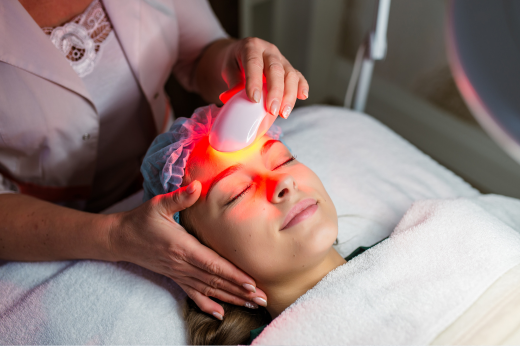
Are you suffering from wrinkles, fine lines, or dull, dry, and sagging skin? Is unwanted hair and a tanned skin tone bothering you? Then you are at the right place! This informative article will explore the possibility of overcoming skin-related concerns through cosmetology. This is one of the most trending branches of medicine since it helps enhance your natural beauty, which may have faded due to several physiological or environmental factors. We will discuss a common cosmetic procedure called “Intense Pulsed Light (IPL) Therapy”!
Intense pulsed light, or IPL therapy, is a noninvasive phototherapy popular among millions worldwide. This helps reduce signs of aging and unwanted hair and improves darker patches (hyperpigmentation) on your skin. Keep reading to learn more about this revolutionary cosmetic enhancement procedure.
Intense pulsed light, IPL, or photo facial is a popular, noninvasive cosmetic procedure that addresses a wide range of skin-related issues. The main goal of this procedure is to give your skin a clearer and more even, youthful look. IPL therapy helps treat many skin issues in areas such as your face, hands, neck, or chest.
IPL therapy uses a special handheld device or tool that emits multiple wavelengths of light into the skin. The light energy is converted into heat energy to heat the cells in the skin and break them down. The damaged and dissolved tissues are then naturally removed from the body.
IPL treatment can be chosen to address a wide range of skin concerns, such as:
IPL and laser therapies are the same, but they have a few differences. These include the following:
| IPL | Laser |
| This is gentler on the skin | Laser treatment is more intense |
| Usually requires more sessions | Can offer noticeable results in just a single session |
| IPL releases light of different wavelengths | The laser focuses just one wavelength of light on your skin |
| Less powerful | More powerful and effective |
| May not be effective for all treatments such as tattoo removal | Often recommended since it is versatile |
| Not recommended for darker skin tones | Recommended for all skin tones |
IPL is a safe and effective noninvasive cosmetic procedure, but it is contraindicated in the following conditions:
Before an IPL skin treatment, your dermatologist (a doctor specializing in diagnosing and treating conditions related to the skin, hair, and nails) will examine your skin and determine if IPL treatment is the right choice for your skin needs.
You must avoid the following things at least a week before the procedure:
IPL treatment is an in-office procedure where one session lasts about 20 to 30 minutes. The procedure is as follows:
The number of sessions needed usually depends on your individual skin needs. For the desired results, you may require 4 to 6 sessions every 3 to 6 weeks.
The treated area may appear red or pink immediately after the procedure. This may tend to last around 4 to 7 hours. You may also notice a stinging sensation while your skin heals. Ice packs or a cold washcloth should be used to ease discomfort.
While your skin heals:
You may notice results and gradual improvement within the first week or two after your IPL treatment session.
IPL treatment is a popular cosmetic procedure since it offers the following benefits:
Like any cosmetic procedure, IPL treatment also involves a few side effects, which are mild and short-lived. These include:
If you are not an ideal candidate for IPL treatment, then there are other alternatives, such as:
IPL treatment is a safe, non-surgical, effective method to treat a variety of skin concerns such as age spots, fine lines, wrinkles, acne, and unwanted hair. You are likely to get good results with minimal side effects. Consult your dermatologist to determine if IPL treatment is a good option.